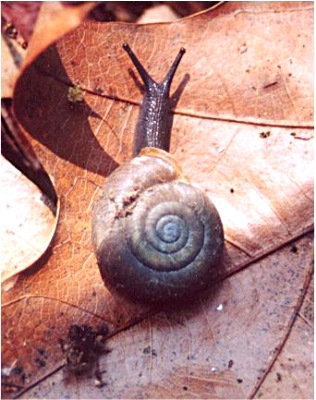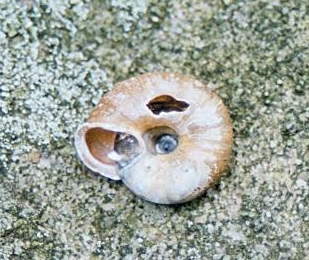|
Three environmental groups
have sued Allegheny Wood Products Inc. to stop the company from logging
portions of the scenic Cheat River Canyon.In their lawsuit, the groups
allege that the logging would illegally harm protected endangered snails
and bats and important habitat for those species.
Lawyers for the groups have
asked U.S. District Judge Irene M. Keeley to block the logging until Allegheny
Wood obtains required permits from the U.S. Department of Interior.
"All we are asking
is that AWP be a good neighbor and obey the law," said Ben Mack of
the West Virginia Chapter of the Sierra Club.
Charleston lawyers Josh
Barrett and Molly McGinley Han filed the lawsuit last week on behalf of
the Sierra Club Chapter, the Cheat Lake Environment and Recreation Association
and Friends of Blackwater.
The lawsuit states that
the Cheat River Canyon "encases a 16-mile stretch of the Cheat River,
the largest undammed river east of the Mississippi River" as it runs
north from Albright in Preston County to Cheat Lake in Monongalia County.
"Throughout the canyon,
Cheat River is bordered by steep sandstone walls and rock talus, and is
forested by a variety of tree stands, including oak, red maple, mountain
laurel and sourwood," the lawsuit states.
In late 2002, the administration
of then-Gov. Bob Wise announced plans to being buying the canyon to turn
it into a public wildlife-management area.
But in May 2003, Allegheny
Energy announced that it had finalized the sale of 5,600 acres of the
canyon and nearby Big Sandy Creek Gorge to Petersburg-based Allegheny
Wood.
The two companies are not
related.Since 1997, Allegheny Wood owner John Crites has been under fire
from conservationists for his purchase and subsequent logging of 3,000
acres of Blackwater Canyon in Tucker County.
The Wise administration
had bid $9.4 million in grants and pledges for the Cheat Canyon property.
When Allegheny Energy revealed
that Crites had bid $9.75 million, the state came up with another $500,000,
for a total of $9.9 million. Allegheny Energy sold to the timber company
anyway
.In their lawsuit, the environmental
groups allege that Allegheny Wood had, by September 2004, begun to build
roads and cut trees on its Cheat Canyon land.
In the process, the suit
claims, the company has violated the federal Endangered Species Act, which
prohibits harming protected species or crucial habitat without an "incidental
take permit" from Interior's Fish and Wildlife Service.
The canyon, including Allegheny
Wood's property, contains important habitat for the threatened Cheat three-toothed
snail and the endangered Indiana Bat, the lawsuit notes The timber company's
Cheat property accounts for nearly a third of the snail's entire known
range, the lawsuit
says.
"Accordingly, if the
snails are eliminated from AWP's property, this would have a devastating
effect on the species' overall ability to survive and recover," the
lawsuit says.
"It is impossible to
conduct normal road building or logging activities in this location without
some adverse impacts to this snail's habitat and likely harm to individual
snails," the
lawsuit says.
"Considering that the
Cheat River Canyon is presently the only known habitat for the threatened
Cheat three-toothed snail, Defendant's current logging and related activities
- which are occurring without AWP having even applied for an Incidental
Take Permit pursuant to section 10 of the [Endangered Species Act] - demonstrate
complete disregard for ESA requirements," the lawsuit says.
Further, the lawsuit says
that Allegheny Wood has not conducted any surveys of Indiana bats on the
property, despite the known presence of caves and abandoned mines where
bats hibernate.
Company officials have not
"implemented the most basic protection for Indiana bats," the
suit says - restricting logging until after Nov. 15, when most bats are
believed to be hibernating.
In July 2003, Allegheny
Wood asked the Fish and Wildlife Service to declare that its logging would
not harm threatened or endangered species.
Agency officials declined,
the lawsuit says, and "expressed concerns" that the company's
activities would harm these species.
In October 2004, then-DNR
Director Ed Hamrick also told Allegheny Wood that his agency was concerned
about the impacts on endangered species in the canyon, the suit says.
Hamrick told the company
that it needed to develop a Habitat Conservation Plan, or HCP, for its
canyon activities. The lawsuit says that the company has never done so.
The lawsuit says that Allegheny
Wood has not responded to a formal Notice of Intent to sue filed with
the company in September 2004.
Officials from Allegheny
Wood Products could not be reached for comment Monday
.On its website, Allegheny
Wood says that it supports policies that integrate "the perpetual
growing and harvesting of trees with the protection of wildlife, plants,
soil and water quality.
"Working with nature
to ensure the future of the nation's forests for our children and grandchildren,
responsible environmental practices and sound business practices can be
integrated to the benefit of landowners, customers and the people we serve,"
the company says.
In a section of its website
about Blackwater Canyon, Allegheny Wood says that environmental groups
are trying to have that area "made into a national park against the
wishes of the owner.
"The right to own and
manage private property is a great part of the freedom we have in America,"
the company says.
"It is extremely important
that private property rights are respected and forest health is considered
on the Blackwater Canyon and other lands throughout the United States."
|

